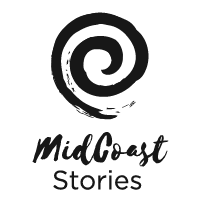
In 2017, the University of Newcastle began documenting massacres of Aboriginal people at the hands of early settlers. According to Professor Ryan the massacres were conducted in secrecy and few perpetrators were brought to justice.1 One such massacre occurred at Belbora.
In the early 1830s, the Australian Agricultural Company (AACo) established a heifer station at Belbora. The station was manned by a small number of convict labourers.2 The occupation of land by Europeans caused obvious tensions as they intruded on and cleared the traditional hunting and fishing grounds of Aboriginal people. As a result of this clearing food became scarce, people were starving and pilfering of food supplies from settlers’ huts began.3
In 1834, a situation occurred between the AACo labourers and the Aboriginal people which escalated into a local tragedy. The labourers barricaded themselves inside their hut and there they hatched a plan. Using poison from dingo baits, they cooked up damper which they then gave to the Aboriginal people. Some of the people ate the bread there while others took it to share with their family. The result was devastating with people dying an agonising death.4 One account claimed several deaths occurred,5 while another described the gully as thick with bodies from the effects of arsenic poisoning.6
In 1981 Geoffrey Bloomfield published his book, Baal Belbora: The End of the Dreaming which outlined this and other atrocities.7 At the time attempts were made to halt and discredit his publication.8 There is now a growing body of research that sadly shows this was not an isolated incident in the history of Aboriginal people and early settlers.
Author: Janine Roberts
References:
1 Julie Power, Mapping Aboriginal massacres makes it time to recognise the colonial wars, The Herald, 6 July 2017, https://www.theherald.com.au/story/4774081/the-maps-that-reveal-the-horror-of-australias-massacres/
2 Wingham Chronicle and Manning River Observer, 25 April 1922, 2.
3 Douglas Rye, Newcastle Morning Herald, 1964, https://downloads.newcastle.edu.au/library/cultural%20collections/pdf/rye1964.pdf; John Ramsland, Custodians of the soil, Greater Taree City Council: 2011, p. 26-27.
4 University of Newcastle, Colonial Frontier Massacres in Central and Eastern Australia 1788-1930, https://c21ch.newcastle.edu.au/colonialmassacres/detail.php?r=1766; The Land, 27 July 1938, 33; Wingham Chronicle and Manning River Observer, 25 April 1922, 2.; 16 August 1918, 4; Douglas Rye, Newcastle Morning Herald, 1964; John Ramsland, Custodians of the soil, Greater Taree City Council: 2011, p. 26-27.
5 Rye, Newcastle Morning Herald, 1964; University of Newcastle, Colonial Frontier Massacres in Central and Eastern Australia 1788-1930.
6 The Land, 27 July 1938, 33.
7 Geoffrey Bloomfield, Baal Belbora: The End of the Dreaming, 1986, p.119-121.
8 John Ramsland, Custodians of the soil.







